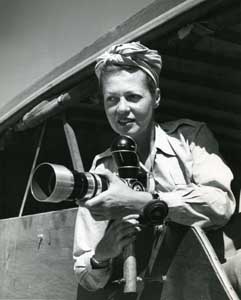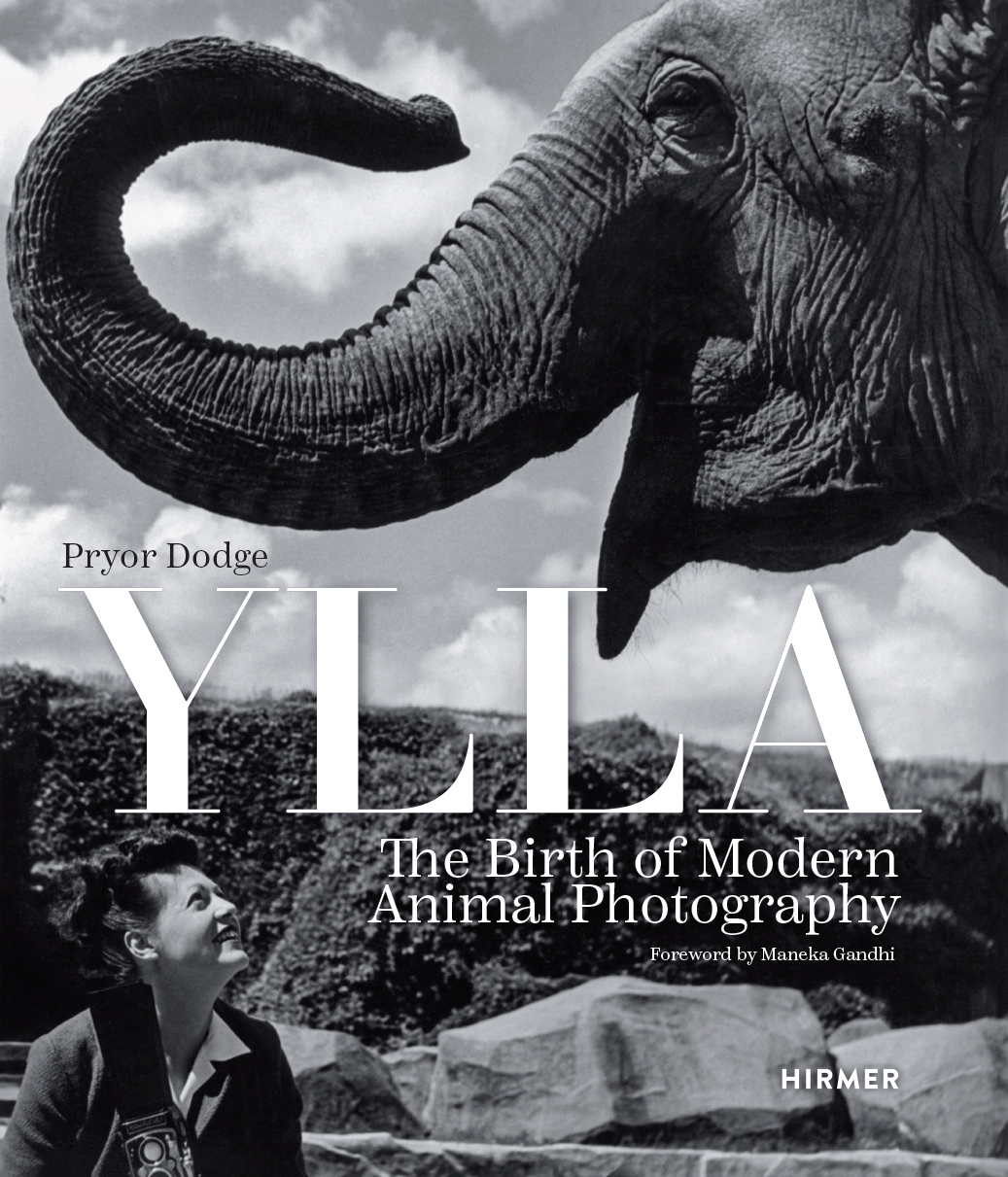|
|
 YLLA
Public lecture presentation available on Ylla's life and photography illustrated with PowerPoint slides – – NOW AVAILABLE – – YLLA, The Birth of Modern Animal Photography HIRMER PUBLISHERS, Munich, Summer 2024 240 pages, 287 illustrations  Photo by ©Ergy Landau Ylla devoted herself exclusively to animal portraiture at a time when no one had thought of specializing in animal photography. Driven by her symbiotic relationship with animals, she created a new genre in animal photography: the expression and personality in animals. Ylla: The Birth of Modern Animal Photography recounts the fascinating, eventful, and very personal odyssey of a "New Woman" par excellence, fearless and knowing no limits. She was part of artists' circles in Belgrade, and Paris (Brassaï, Kertesz, Henry Miller...), originally taking beguiling photos in her studio and zoos, however, supported by MoMA and U.S. Camera, during WWII she fled to New York via Marseille where she started her career again from square one. Ylla later traveled to Africa, and India where she died in a tragic accident while photographing a water buffalo race. Her Animals in Africa (Robert Delpire, Revue NEUF) and Animals in India are some of the first books on the subject. Ylla also introduced photography to children's literature, collaborating with Margaret Wise Brown and French poet Jacques Prévert among others. Of her 25 books, The Sleepy Little Lion (15 editions, 9 languages) and Two Little Bears (22 editions, 13 languages), are juvenile classics.
Camilla Koffler, known by her artist name Ylla (pronounced ee-la), was born in Vienna in 1911 to a Croatian mother and a Romanian father, both Hungarian nationals. During the First World War, she was obliged to travel with her mother by foot between Hungary, Romania and Yugoslavia, the family jewels sewn into her mother's fur collar and the money stuffed in her shoes. In 1919, she was placed in a German boarding school in Budapest, a six year period of relative stability. She joined her mother in Belgrade in 1926 where she studied sculpture with Petar Palavičini at the Academy of Fine Arts. Soon she discovered that Camilla in Serbe stands for camel, whereupon she called herself Ylla. Her early interest in animals is revealed in a bas-relief sculpture depicting animals, commissioned by a cinema in Belgrade, as well as by her efforts at the time to find homes for the stray cats and dogs she rescued.
Formal Portraits
In 1931 Ylla moved to Paris to continue her studies at the Académie Colarossi and supported herself by working with the photographer Ergy Landau as assistant and photo retoucher. The following year, after impressing Landau with several photographs she had taken of farm animals while on vacation in Normandy, Ylla began to consider foregoing sculpture for photography. Landau soon arranged an exhibition for Ylla at Galerie de La Pléiade, a vanguard scene quickly gaining prominence for promoting the current wave of photography to its select and informed public. Her exhibition was well received, such that Landau encouraged Ylla to open the first studio in Paris specializing exclusively in animal portraits. She was thus regarded as a curiosity by other photographers. Nobody had thought of photographing animals and people were not used to paying much to have their dogs or cats photographed. She struggled to be accepted as a photographer—it was not an easy life.
As it could be years, due to cost, before Ylla would realize her dream to photograph whole herds of animals in Africa, she had to content herself with zoos and safari parks. A zoo cage was typically a man's environment at the time, and a woman working in such a dangerous enclosed space was exceptional. But Ylla was fearless and knew no limits. Venturing into a cage for a closer, more intimate photo without bars, was just another normal day's work. Stories of her close calls courting danger only furthered her renown.
Landau was Ylla's entrée to the artistic milieu of Montparnasse; she introduced Ylla to Charles Rado of the RAPHO photo agency, who immediately began to promote her internationally in the world of publishing. Her photographs first appeared in several annual editions of Photographie, published by Arts et Métiers Graphiques, and Lilliput in England. In 1936, Ylla participated in the Exposition internationale de la Photographie contemporaine at the Musée du Louvre, the first photography exhibition to take place in a state museum – nine Ylla photographs were exhibited. In 1937, the Museum of Modern Art (MoMA) in New York, included three Ylla photographs in its retrospective Photography 1839–1937. The same year, Ylla published two small collections of dog and cat photographs, followed in 1938 by her first major book, Petits et Grands (published as Big and Little in England and the United States). That same year she collaborated with British evolutionary biologist Julian Huxley for his new book, Animal Language, which included two records of animal calls.
“The Bachrach of U.S. canine photographers” Life Magazine, 1947
The Second World War and the invasion of France interrupted Ylla's developing career. In 1940, MoMA submitted her name to the U.S. State Department requesting an entry visa, which in 1941 enabled her to immigrate to America. She soon opened a studio in New York and was quickly immersed again in the world of zoos, pet owners, advertisers and editors. Her work appeared in most major illustrated magazines both in the U.S. and abroad. Ylla produced ten books between 1944 and 1954, her one portfolio classic, Animals, with a text by Julian Huxley, and in the French edition, Des Bêtes..., accompanied with a poem by Jacques Prévert. Several were designed for children, two of which, The Sleepy Little Lion (15 editions, 9 languages) and Two Little Bears (22 editions, 13 languages), became juvenile classics.
Animal Language
Interspecies Play Dates
Ylla finally travelled to Africa in 1952, where she spent three months in Kenya and Uganda photographing wild animals in their natural habitat for her book Animals in Africa, published by Robert Delpire, which has a text by the evolutionary archeologist L. S. B. Leakey. This was a new and exciting experience, one that marked a turning point in her work. After this trip she preferred to work in the wild.
Africa and India
It was the film director Jean Renoir who prompted Ylla to travel to India. Ylla sent a copy of Animals in Africa to the Maharaja of Mysore who in turn invited her to attend the Dasara festival in 1954. She was subsequently invited by the Maharaja of Bharatpur to attend their annual festival. On March 30, 1955, while photographing a dangerous bullock cart race during the festivities in Bharatpur, she fell from a jeep and was fatally injured. Photographs taken in India became the basis for two books: Animals in India and The Little Elephant (5 languages). Continued clear interest in her work enabled Charles Rado to produce another seven books before he passed away in 1970. Her posthumous renown even extended to two comic books depicting her life story.
Representation: Europe: Gamma-Rapho (Isabelle Sadys), 104, boulevard Arago, 75014 PARIS, France, Tél. : 01 73 00 70 74, [www.gamma-rapho.com]
U.S.A.: Photo Researchers, 307 Fifth Avenue, New York, N.Y. 10016, Tél. : (212) 758-3420, [www.photoresearchers.com]
Japan: Japan Foreign-Rights Centre (JFC) (Yuriko Y. Yoshida: ), Sun Mall No.3, Rm.201, 1-19-10 Shinjuku, Shinjuku-ku, Tokyo 160-0022, Japan, Tel. : 81-3-3226-2711, Fax: 81-3226-2714
Ylla Archive: A portion of the Ylla Archive is at the Center for Creative Photography, University of Arizona, Tucson AZ 85721[download file]
Links: Books / Revues / Catalogues / Encyclopedias Magazines / Newspapers / Websites The Rapho/Rapho Guillumette photo agency Memorial article by Charles Rado published in US Camera Annual, 1959
Photographs & text ©2019 Pryor Dodge. Links to this page are permitted.
|
|